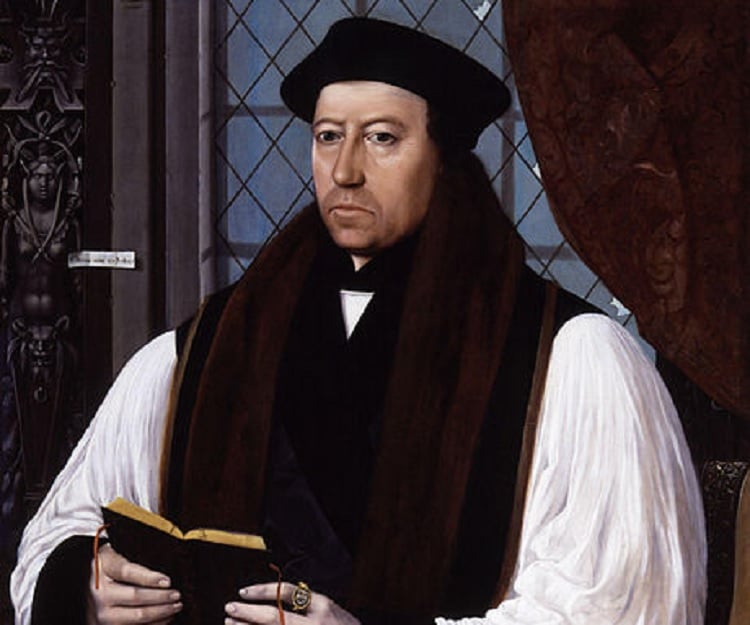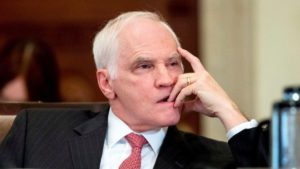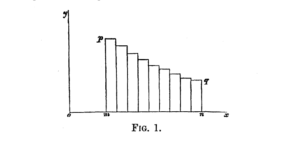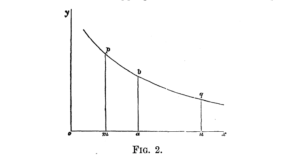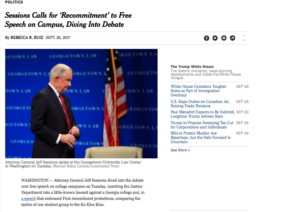We would all probably do better were the word “liberal” simply abolished. What are we talking about when we say “liberal”? Do we mean “generous”? Do we mean “unconstrained”? Do we mean “progressive” (the opposite of “conservative”)? But, of course, even if we wanted to, we cannot abolish words.
To make matters worse, “liberalism” has come to be associated very nearly with its opposite in the United States: a “liberal” is someone who favors constraints; a “conservative” is someone who opposes constraints. Go figure.
Enter John Milbank and Adrian Pabst and their The Politics of Virtue, whose unfortunate subtitle is “post-liberalism and the human future.” The subtitle is unfortunate because, notwithstanding much hedging, Milbank and Pabst advance what appears on its face a mash-up of definitions of “liberalisms” that do more to confuse than clarify their argument. On the surface, Milbank and Pabst endorse the dominant taxonomy:
Both challenges exposed the limitations of the two liberalisms that have dominated Western politics for the last half-century: the social-cultural liberalism of the left since the 1960s and the economic-political liberalism of the right since the 1980s (1).
To this dominant distinction, however, Milbank and Pabst add another category: “liberalism as a philosophy and an ideology” (2). As a philosophy and ideology, liberalism both temporally and logically precedes liberalism as economic system and cultural form. Temporally, liberalism sets itself against the constraints of nature, generally, and of human nature specifically. And logically it grants abstract value precedence over material substance. This gives rise to the “metacrisis” of liberalism: “The metacrisis of liberalism consists more specifically in its evermore exposed tendency at once to abstract from reality and yet to reduce everything to its bare materiality” (3).
Milbank and Pabst’s characterization of the metacrisis of liberalism could suggest something close to Karl Marx’s critique of capitalism in 1867; where Marx notes how commodification gives rise to an isolation of abstract value from its material form of appearance. In that case, we should anticipate Milbank and Pabst to trace the metacrisis of liberalism to the moment in history when social actors began to differentiate between the abstract, immaterial value of a good and that good’s material form of appearance. Instead, Milbank and Pabst credit this fissure between abstract immaterial value and bare materiality to the “violent ontology” and “pessimistic anthropology” of individuals who have embraced the “philosophy” and “ideology” of liberalism.
That is to say, rather than grounding the rise of liberalism socially and historically in a gradual transformation in practices over time, Milbank and Pabst instead credit its appearance to individuals whose violent ideas about being and pessimistic views of human nature give rise to the philosophy and ideology of liberalism.
If you are interested in explaining why liberalism appears when and where it does, you should not look to the historical or social landscapes in which it appeared. Rather should you look at the perverse, violent, and pessimistic ideas and philosophical concepts of the individuals who created and imposed liberalism upon the historical and social landscape.
This twin tendency leaves an irreducible aporia between human will and artifice on the one hand, and imagined laws of nature and history on the other – the violent ‘state of nature’ (as for Hobbes) or conflict-ridden human association (as for Rousseau) that requires the remedies of coercive state control and market competition. In this way, liberal ideas and institutions rest on a violent ontology and a pessimistic anthropology that incentivise and reward bad behaviour (3).
We might still justifiably wonder why, after 2.4M years of human history, it was only in Europe’s sixteenth century that human beings first practically isolated abstract value from its material form of appearance. What constellation of social, political, economic, and cultural forms led individuals, quite suddenly, to abandon 2.4M years of practice and tradition in favor of the novelty of abstract value?
It would seem that explaining this sudden attraction might be of some value. In the place of an explanation, however, Milbank and Pabst instead offer a summary based loosely on Karl Polanyi and Fernand Braudel’s interpretation of this transition. Polanyi and Braudel credit political intervention for the appearance of this historical anomaly. For Braudel as for Polanyi, ever since they settled into communities these communities displayed two qualities: material life and markets. Material life, for Braudel, describes “the stratum of the non-economy, the soil into which capitalism thrusts its roots but which it can never really penetrate (1982:229). Above the non-economy “comes the favored terrain of the market economy, with its many horizontal communications between the different markets: here a degree of automatic coordination usually links supply, demand and prices” (229-230).
Then alongside, or rather above this layer, comes the zone of the anti-market, where the great predators roam and the law of the jungle operates. This — today as in the past, before and after the industrial revolution — is the real home of capitalism (230).
Capitalism takes hold and spreads in the quattrocento because it is in the fourteenth century that state actors intervene in and constrain markets to behave in a manner to their benefit.
Braudel, it should be noted, is building upon Karl Polanyi’s ground-breaking 1944 study The Great Transformation, which explicitly set itself against the dominant liberal narrative according to which capitalism is a story of ever greater freedom from government constraints. To the contrary, shows Polanyi, capitalism only appears and can only be maintained through public interventions into private enterprise. Polanyi’s account appears everywhere, on nearly every page, in Milbank’s and Pabst’s text. (The official index — 8,9,47,55,59,61,74,75,89,96,87,98,99,102,106,114,123,125,126,142,150,174,281 — understates Polanyi’s presence.)
To their credit, Milbank and Pabst do acknowledge the limited nature of Polanyi’s and Braudel’s account. In a footnote to Chapter 7, they admit:
One could argue, against Arrighi and Fernand Braudel, that earlier focuses on finance in centres such as that of Genoa were not the decadence of an originally productive capitalist economy but, rather, pre-capitalist anticipations of capitalism that still awaited the beginnings of the extraction of surplus value from waged labour, beginning later in Dutch towns and, supremely, the English countryside. But the latter development only led to a ‘take-off’ when later combined, not just with colonialist primary accumulation overseas, but also with a state-sponsored speculation on the national debt (279).
Yet, the acknowledged limitation simply throws us back upon earlier, pre-capitalist instances of avarice and greed. So, for example, what is interesting about the Dutch towns to which Giovanni Arrighi calls our attention is not the extraction of surplus value or wage labor we find in these towns, but why surplus value or wage labor, which were complete novelties, should occur to anyone at all.
Individuals are perverse; upon this we can all agree. The question is why did this specific perversion appear and spread so readily in early modern western Europe? Milbank and Pabst assume — but do not show — that its appearance can be traced to a “violent ontology” and “pessimistic anthropology.” But I believe that I can show that its origins were far less malevolent, indeed, benign.
In his Time, Work and Culture in the Middle Ages, medievalist Jacques Le Goff calls our attention to the archival research of Henri Pirenne at the end of the last century. Among Pirenne’s exploits was collecting and indexing the records of textile manufactures back to the tenth century. It was one particular record that caught Le Goff’s attention: “In Ghent, in 1324, the abbot of Saint-Pierre authorized the fullers ‘to install a bell in the workhouse newly founded by them near the Hoipoorte, in the parish of Saint John'” (45). If Le Goff is correct, then Pirenne’s research had stumbled upon what may well be the first instance anywhere that the value of productive human action had been measured in equal units of abstract time.
Working with these same documents, Harvard social historian David Landes fits Pirenne’s record into a narrative of time measurement stretching back through the thirteenth century, when, owing in part to Europe’s mini-Ice Age, cloistered communities were hard pressed to accurately announce times of prayer (Revolution in Time, 53-82). According to Landes, the Chinese escapement mechanism reached Europe no earlier than the thirteenth century. Its utility was recognized almost immediately. Driven by a spring or by a chain weighted on one end, a sprocket fixed with a peg, would ring a bell at regular intervals, thereby reminding Frère Jacques that was time to ring a larger bell — Ding, Dang, Dong — inviting his brothers to prayer. Roughly a century passed between the first sacred use of bells to their installation in the workhouse in Saint John’s parish, a century during which, according to Landes, cloistered bells proliferated throughout Europe.
A second factor in the expansion of abstract time and value was western Europe’s relatively fragmented economic, social, and political fabric. Institutionally Europe was light years behind Byzantium, the Yuan or the Ming dynasties. Indeed, institutionally Europe could hold a candle to none of the empires, whether of Afroeurasia, the Pacific Islands, or the Americas. Europe’s frigid, icy, wet, and rocky landscape stood as a barrier against those who thought to conquer its peoples. And, yet, let on its own, Europe’s fragmented institutional landscape proved specially resilient. At the same time, Europeans quickly absorbed any new technology that found its way to their shores. The escapement mechanism, which was little more than an astrological toy for Chinese royalty, had no other function within China’s finely articulated, integrated social, cultural, political, and economic landscape. In Europe, by contrast, the escapement challenged many of Europe’s most sacred institutions.
So, for example, where for centuries value had been subject to a delicate social calculus hammered out among the estates — clergy (justice), nobility (security), and trades (livelihood) — the discovery of abstract time and value suggested that this calculus might be obsolete. Similarly, where time (itself a divine creation) had waxed and waned seasonally as one moved away from the equator, abstract time and value suggested two different temporal metrics: one that followed the moon, the sun, and the stars, and another that measured abstract time.
As EP Thompson has shown in his ground-breaking Customs in Common, for many centuries these two metrics worked side by side, but often in tension with one another, well into the twentieth century.
A third factor in the spread of abstract time and abstract value was, therefore, that it constituted the only metric that Europeans shared in common. Indeed, it is not too much to say that abstract time and abstract value define Europe in a manner far more rigorous than a mere point on a compass such as “the West.” When in the fifteenth century Orthodox Christians and Muslims looked “west,” they were deeply disturbed by what they already saw. In a matter of decades, not centuries, Europeans were shedding centuries old traditions and customs in what historians would mistakenly refer to as a renaissance or “rebirth.” But it was not a rebirth at all. It was something entirely new.
Other historians in other fields have noted the transformations overtaking Europe following the invasion of abstract time and value. We can list them here in no particular order. (Those wishing for a more detailed description can request my book or articles.) There is, of course, the simultaneous eroticization (secularization) and elimination of Mary’s breasts, which followed not from more realistic printing, but rather from the practical isolation of abstract value from its material form of appearance; simultaneously we see the gradual elimination of wounds from the risen and glorified Body of Christ; and, of course, there is the centerpiece itself: the Bread and Wine of the Holy Sacrament. Recall that St Thomas devoted chapter after chapter showing not how God could be in things — for that was self-evident — but rather showing why God was not sacramentally present in every thing.
As abstract value and time made their way across Europe — as the actual physical rhythms of towns folk and peasants alike became accustomed to clock time — social actors also became accustomed to keeping two separate temporal ledgers: one marking abstract value, the other marking material value. When, in 1517, Martin Luther tacked his 95 Theses to the church door of Wittenberg no one needed convincing that grace cannot be conveyed by bodies, that God is not in things, that value is abstract.
As always, intellectuals will show up belatedly to explain what has happened; but what had happened had happened without either their cooperation or their knowledge. Capitalism arrived in Europe not on account of state intervention, but actually in spite of it. It was not empire-building and capital accumulation that made capitalism; rather was it capitalism that sent European monarchs trolling the globe for gold and silver. It was not European conflict that brought monarchs to seize control of markets (contrary to K Polanyi, F Braudel, and G Arrighi). Rather was it capitalism that generated conflicts that demanded such control.
Yes, monarchs and oligarchs made good use of the new social form; but it is critical that we notice: they were not its authors.
We might rest our case there. Empirically, the preponderance of historical evidence points to Europe’s revolution in time as the signal process in our peculiar habit of isolating abstract value from its material form of appearance. So Milbank and Pabst are correct to note that there is nothing whatsoever natural or inevitable to the spread of this contagion. They are mistaken, however, when it comes to the mechanisms responsible for its introduction and expansion. And this mistake weakens their argument significantly. How?
When Milbank and Pabst adopt the Polanyi-Braudel line, they, in fact, adopt a line of neo-Marxist reasoning that reinscribes what it wishes to critique. That is to say, it ascribes to ideology and to philosophy that which, in fact, arose from social practice. I suspect that this rhetorical strategy enjoys roots far deeper than either Milbank or Pabst appreciate. Already in the eighteenth century, but everywhere in the nineteenth, a habit of mind had already spread throughout both liberal and conservative Europe that counted what it mistook as “nature” to be superior to “intellect.” (In the late 19th century this will have reached its apotheosis in Nietzsche’s Dionysian versus Apollonian opposition, which, obviously, lent itself just as easily to right as to left wing revolution.) When, by contrast, we recognize how the opposition itself arises out of the peculiar two-sided character of the commodity, we also then have at hand a more adequate understanding of the path forwards.
To be quite clear the “violent ontology” and “pessimistic anthropology” to which Milbank and Pabst draw our attention is an ontology and an anthropology immanent to the commodity form itself. On the one hand, this means that this ontos is, happily, not fundamental in M Heidegger’s sense. It is not what human beings fundamentally are. Rather is it what human beings become under the conditions of commodity production and exchange. Yes. Human beings are sinful. But 2.4M years suggests that their sin always — always — appears in grace. For 2.4M years, nomadic human communities across the globe found reason to share with and care for the members of their communities, and the communities of others. Nor was this the exception. It was the rule. A fundamental anthropological pessimism only takes root when both sin and grace lose their bodies, when sin becomes an ontological, transcendental, fundamental characteristic of human being, rather than a flaw.
The tragedy, of course, is that capitalism works. Once the new mediations of time, value, and labor have “naturalized” themselves, we enter a Matrix-like world where the actions of all are channeled towards feeding and expanding the Matrix. The good news is . . . the Good News. It is the Gospel. Christians can — and should be encouraged to — expose the sin entailed in and by the capitalist social form. And Milbank and Pabst are right to fault liberalism as a false alternative. Liberalism itself is a central element in “the Matrix.” But not — or not primarily — as philosophy and ideology, but as practice and social form. Which means that we cannot think our way out of this bag. It will take more than decoupling ourselves from the machine. Transformed practices and transformed regulatory regimes give rise to transformed experiences and understandings, which give rise to transformed practices.
This is the substantive mystery outlined by St Paul in his first letter to the Corinthians (1-2). Liberalism, by contrast, believes that this will happen naturally, on its own, without redemption, without conversion, without sanctification, without practice, and without the Body of Christ — privately, in isolation, in the inner man. We disagree.

